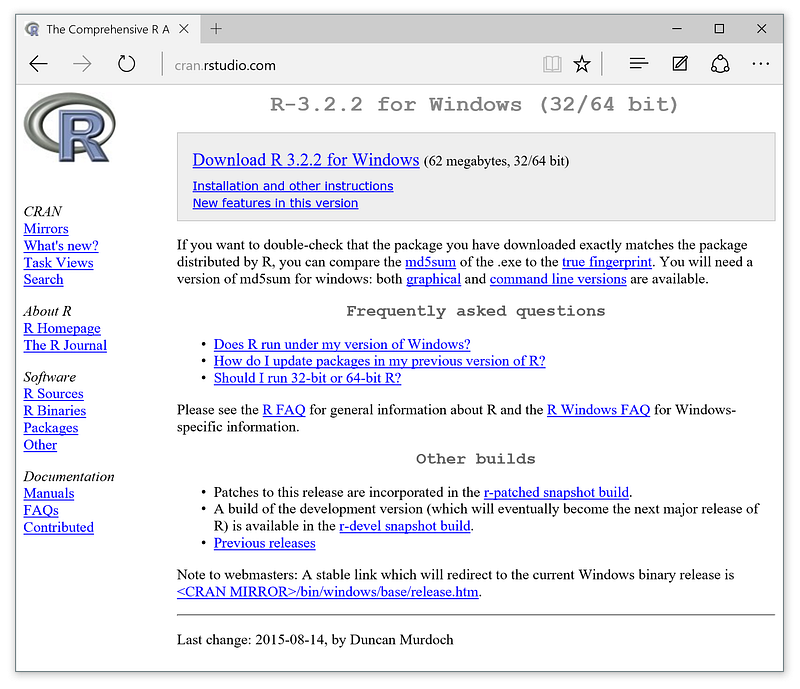

To generate PDFs directly with RStudio, you first need to install another program called “Latex.” The easiest way to install Latex is via an R package, TinyTex, by running just once, in the R console, first install.packages('tinytex') and then tinytex::install_tinytex(). You have a few different options for getting PDFs to work in RStudio:

Unlike HTML or Word formats, generating PDFs with RMarkdown requires one additional step. When you create a new RMarkdown document, RStudio asks you what format you want your final output to be in: PDF, Word, or HTML. Assignment file names should be in the following format: HW_01_lastname_firstinitial.pdf, where of course 01 gets replaced with whatever the appropriate homework number is. For this class, we want the homework submissions to be in PDF format, because that works well with Canvas. Rmd file, and also open it in RStudio to preview it. To “knit” the pretty document, you click on “Knit PDF” in the Source pane in RStudio, which will create the PDF in the same directory as the. Rmd file, and the prettier PDF, Word or HTML file you “knit” the. You will always have two documents for any assignment: the plain-text. Rmd file into the final PDF, Word, or HTML document, which is what you will submit as your finished product. Rmd plain-text document, you write your homework answers in that document, including any R code or equations you want, and then when you are done (or want to check how the output will look so far), you “knit” the. This creates a new plain-text file with a. To create a new RMarkdown document, in RStudio you go to File -> New File -> R Markdown. The power of RMarkdown is that it allows you to include R code and equations in a way that is easy to write, but produces attractive and legible output. The basic idea is that you write a plain-text document with some plain-text formatting notations, and your machine (such as RStudio) turns that into a pretty PDF, HTML, or Word document. It is a powerful tool for producing beautiful documents that combine R code, the output from that code, well-formatted math, and text. RMarkdown is a plain-text format that allows you to create rich documents in a variety of common formats, such as PDF, HTML, or Microsoft Word. React.All submissions for this course should be written using RMarkdown in RStudio, and submitted as a PDF document.How to Format Date in JavaScript with Moment.JS.Please stop using classes in JavaScript.Save my name, email, and website in this browser for the next time I comment.

To make use of some basic LaTeX commands in RMarkdown (such as \newpage), you can simply write them in the document: How to use regular LaTeX commands in RMarkdown Note that this setup is required for PDF output, if you just want to stick to HTML, that you do not have to do anything: it works out of the box. You need to run this command: tinytex::install_tinytex()Īnd that is it! This command will download the latest TinyTeX distribution and unpack it to be used by RMarkdown. It is recommended to use TinyTeX, a lightweight LaTeX distribution that can be installed right from R console. When you are using RStudio, there is barely any setup that you need to do. If you have not used LaTeX before, I suggest you read this first. This article assumes that you have used LaTeX in the past, and just looking for info how to use it in RMarkdown. In this article, I will show you how to use Latex in RMarkdown to produce beautiful documents. When working on a data science project in R, one often needs to write up a good-looking report, including some tables, formulas, and funny formatting.


 0 kommentar(er)
0 kommentar(er)
